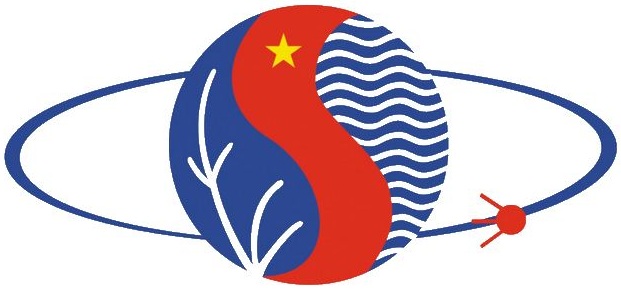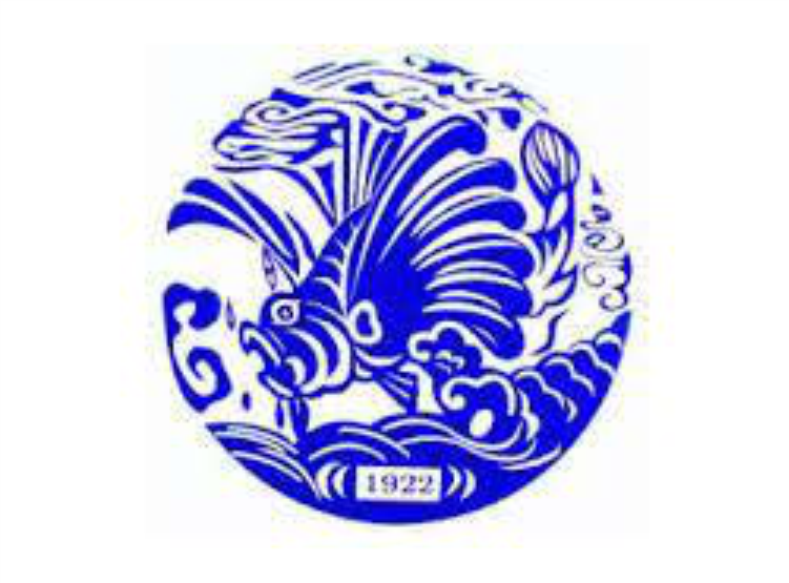Water quality of submarine caves and marine karst lakes in Cat Ba Archipelago (Hai Phong, Vietnam)
Author affiliations
DOI:
https://doi.org/10.15625/1859-3097/18632Keywords:
Submarine caves, marine karst lakes, water quality, Cat Ba ArchipelagoAbstract
Submarine caves and marine karst lakes in the Cat Ba archipelago (Hai Phong) were surveyed in June and November, 2019. The results showed that the water was weakly alkaline, the dissolved oxygen concentration was very low, most of the oxygen saturation in the water was in the range of 50–70%. Water in submarine caves had higher and more stable salinity than that in marine karst lakes, however, the dissolved oxygen concentration was lower than that in lakes. The self-purification of water was better in the rainy season. The water was polluted by ammonium in the rainy season in Ang Vem, Ba Man, Ba Mat and Ang Gay lakes. There is no evidence of organic contamination but the high nitrate and phosphate concentration had been recorded. The presence of H2S gas in the water had begun to affect organisms.
Downloads
References
[1] D. Ford and P. D. Williams, Karst Hydrogeology and Geomorphology. Chichester, UK: John Wiley & Sons, 2007.
[2] B. Öztürk, Marine Caves of the Eastern Mediterranean Sea: Biodiversity, Threats and Conservation. Beykoz, Istanbul: Turkish Marine Research Foundation (TUDAV), 2019.
[3] T. D. Thanh, “The Ha Long Bay Geological Wonder,” Vietnam Journal of Earth Sciences, vol. 34, no. 2, pp. 162–172, 2012. [in Vietnamese].
[4] C. Cerrano, F. Azzini, G. Bavestrello, B. Calcinai, M. Pansini, M. Sarti, and D. Thung, “Marine lakes of karst islands in Ha Long Bay (Vietnam),” Chemistry and Ecology, vol. 22, no. 6, pp. 489–500, 2006.
[5] F. Azzini, B. Calcinai, C. Cerrano, G. Bavestrello, and M. Pansini, “Sponges of the marine karst lakes and of the coast of the islands of Ha Long Bay (North Vietnam),” in Porifera Research: Biodiversity, Innovation and Sustainability, M. R. Custódio, G. Lôbo-Hajdu, E. Hajdu, and G. Muricy, Eds. Rio de Janeiro: Museu Nacional, 2007, pp. 157–164.
[6] N. D. Ngai, D. V. Thao, D. C. Thung, L. T. Thuy, P. V. Luong, C. T. Trang, V. T. Luu, D. D. Tien, N. V. Quan, and P. V. Chien, “New data on water environment and organism in submerged caves and saltwater lakes in Ha Long and Cat Ba areas,” Vietnam Journal of Marine Science and Technology, vol. 16, no. 2, pp. 167–175, 2016.
[7] Ministry of Science, Technology and Environment, TCVN 5998-1995 (ISO 5667-9:1992) - Water Quality - Sampling - Guidance on Sampling from Seawater, 1995.
[8] Ministry of Science and Technology, TCVN 6663-3:2016 (ISO 5667-3:2012) - Water Quality - Sampling - Preservation and Handling of Water Samples, 2016.
[9] G. Chin-Ping and L. Poh-Eng, “Potassium permanganate as oxidant in the COD test for saline water samples,” ASEAN Journal on Science and Technology for Development, vol. 25, no. 2, pp. 383–393, 2017.
[10] Ministry of Science and Technology, TCVN 6178:1996. Water quality - Determination of Nitrite using molecular absorption spectrometry method, 1996.
[11] U.S. Environmental Protection Agency, “Method 352.1: Nitrogen, Nitrate (Colorimetric, Brucine) by Spectrophotometer,” 1971. [Online]. Available: https://www.epa.gov/sites/ default/files/2015-08/documents/method _352-1_1971.pdf
[12] APHA, AWWA, and WPCF, Standard Methods for the Examination of Water and Wastewater, 20th ed. Washington, DC: American Public Health Association, 2000.
[13] R. V. Thurston, R. C. Russo, and K. Emerson, Aqueous ammonia equilibrium calculations, Fisheries Bioassay Laboratory, Montana State University, Bozeman, MT, USA, Technical Report no.74-1, 1974
[14] Ministry of Natural Resources and Environment, National technical regulation on marine water quality (QCVN 10-MT:2015/BTNMT), 2015. [Online]. Available: https://vupc.monre.gov.vn/Data/ files/67-2015-tt-btnmt.pdf
[15] Ministry of Natural Resources and Environment, National technical regulation on surface water quality (QCVN 08-MT:2015/BTNMT), 2015. [Online]. Available: https://vupc.monre.gov.vn/Data/ files/65-2015-tt-btnmt.pdf
[16] ASEAN, Australian Marine Science and Technology Limited, and Australian Agency for International Development, ASEAN Marine Water Quality Management Guidelines and Monitoring Manual, 1st ed. Curtin, A.C.T.: AMSAT Ltd., 2008.
[17] N. V. Bach, P. T. Nghi, C. T. T. Trang, P. T. Kha, and T. H. Nam, “Water quality at the saltwater lakes in Bai Tu Long National Park,” Vietnam Journal of Marine Science and Technology, vol. 19, no. 3A, pp. 131–139, 2019.
[18] R. Mihaiescu, A. I. Pop, T. Mihaiescu, E. Muntean, S. Beldean, N. Muntean, L. Alhafez, and A. Ozunu, “Physico-chemical characteristics of the karst Lake Ighiu (Romania),” Environmental Engineering and Management Journal, vol. 11, no. 3, pp. 623–626, 2012.
[19] F. B. Jensen, “Nitrite disrupts multiple physiological functions in aquatic animals,” Comparative Biochemistry and Physiology Part A: Molecular & Integrative Physiology, vol. 135, no. 1, pp. 9–24, 2003.
[20] G. D. Boardman, S. M. Starbuck, D. B. Hudgins, X. Li, and D. D. Kuhn, "Toxicity of ammonia to three marine fish and three marine invertebrates," Environmental Toxicology, vol. 19, no. 2, pp. 134–142, 2004.
[21] ANZECC and ARMCANZ, Australian and New Zealand Guidelines for Fresh and Marine Water Quality, National Water Quality Management Strategy Paper No. 4, 2000. [Online]. Available: https://www.water-quality.gov.au/anz-guidelines [accessed March 26, 2024].
[22] T. T. T. Cao, T. Do Cong, T. K. Pham, V. B. Nguyen, and H. N. Dinh, “Assessment of sea water quality in some limestone island and archipelagos areas, Viet Nam,” VNU Journal of Science: Earth and Environmental Sciences, vol. 36, no. 1, pp. 70–78, 2020.
[23] P. Williams, World Heritage Caves and Karst, IUCN, Gland, Switzerland, 2008. [Online]. Available: https://portals.iucn.org/ library/efiles/documents/2008-037.pdf
[24] D. Gillieson, J. Gunn, A. Auler, and T. Bolger, Eds., Guidelines for Cave and Karst Protection, 2nd ed. Postojna, Slovenia: International Union of Speleology; Gland, Switzerland: IUCN, 2022, 112 p. [Online]. Available: https://portals.iucn.org/library/ node/49955
[25] G. Y. S. Purba, L. Rumenta, Purwanto, L. E. Becking, and E. Haryono, “Explanation of marine lake formation at Misool Raja Ampat West Papua, Indonesia,” Bulletin of the Geological Society of Malaysia, vol. 72, pp. 151–163, 2021.
[26] F. T. Mackenzie, S. Vink, R. Wollast, and L. Chou, “Comparative geochemistry of marine saline lakes,” in Physics and Chemistry of Lakes, 2nd ed., A. Lerman, D. M. Imboden, and J. R. Gat, Eds. Berlin, Heidelberg: Springer, 1995, pp. 265–278.
[27] I. Dominović, M. Marguš, S. Geček, T. Bakran-Petricioli, D. Petricioli, M. Dutour Sikirić, and I. Ciglenečki, “Physicochemical properties of a marine lake in the central Adriatic (Lake Rogoznica): interaction with the atmosphere, the sea and the surrounding karst,” in EGU General Assembly Conference Abstracts, Vienna, Austria, 2022, p. EGU22-492.
Downloads
Published
How to Cite
Issue
Section
License
Copyright (c) 2025 Vietnam Academy of Science and Technology

This work is licensed under a Creative Commons Attribution-NonCommercial-NoDerivatives 4.0 International License.








